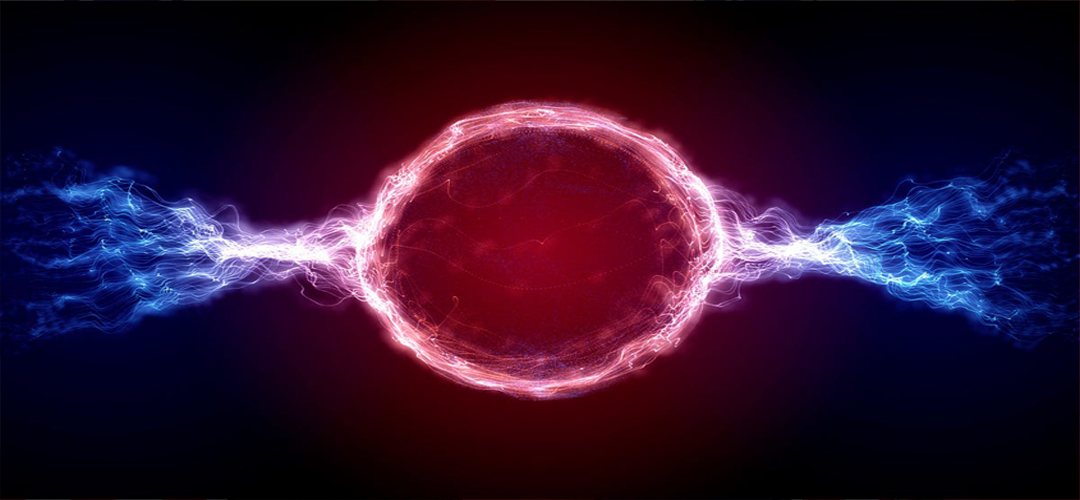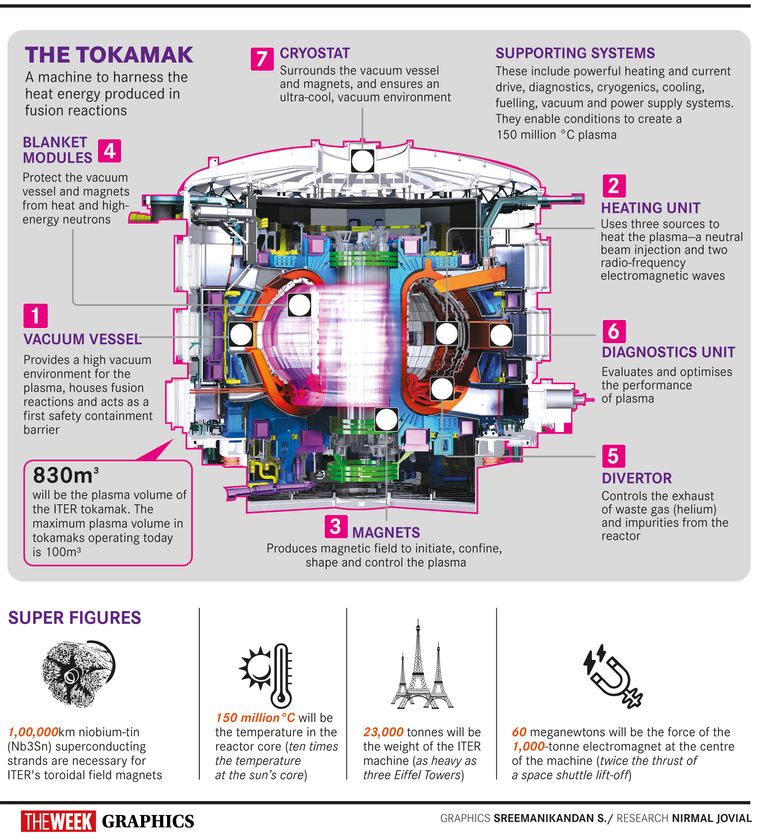NUCLEAR FUSION: WHERE INDIA STANDS?
December 24, 2022 | Expert Insights

When the U.S. Energy Secretary made the startling announcement that Lawrence Livermore National Laboratory (LLNL) in California had achieved a 'net energy gain' of more than one in a fusion reaction, nowhere was this news met with greater enthusiasm than in India.
India has a major stake in using green energy from nuclear fusion reactors. As a net importer of fossil fuel and using vast amounts of pollutant-belching coal in its numerous coal-fired power plants, India needs a lasting solution, that too, a green one. Furthermore, the National Energy Policy (NEP) 2022 has identified 4.63 GW of coal-based capacity to be retired by 2027, for which there is, as of now, no affordable and sustainable replacement.
Background
Nuclear fusion has captivated the minds of scientists around the world since the middle of the twentieth century. The desire to harness the technology that powers the mighty celestial bodies have led to public and private entities pouring in billions of dollars to achieve a fusion reaction where the energy output is more than the input.
A nuclear fusion reaction happens when two light nuclei merge to form a single heavy nucleus, and the leftover mass is released in the form of massive energy that can be exploited in a multitude of ways. To achieve fusion, the fuel must be compressed massively such that the nuclei can fuse and be heated above ten million degrees to overcome the electrical repulsion between them. The resulting energy release is several times greater than a fission reaction (where the nucleus of an atom is split) and much cleaner as no radioactive waste is produced. To achieve this, two main methods are employed.
The first is the inertial confinement fusion (ICF) method which achieves fusion by rapidly compressing and heating a tiny amount of fuel, giving a short window between implosion and explosion where the nuclear force can dominate due to the nuclei’s inertia and overcome the repulsion to fuse. The LLNL used 192 high-powered lasers to fire pulses at a magnetised capsule containing deuterium and tritium placed inside a cylinder (called hohlraum) which heated and compressed the nuclei to the extreme. A 'burning plasma’ is created here where the heat from the fusion reaction is sufficient to achieve further reactions as well as offset the heat lost to the environment (known as the Lawson criterion) rather than having to provide external heat.
The second method is magnetic confinement fusion (MCF), using microwaves, electricity, and neutral particle beams from accelerators to heat a stream of hydrogen gas, turning it into plasma (150-300 million degrees Celsius hot) and then compressing it using super-conducting magnets, resulting in fusion. A toroid shape is the most efficient for holding such plasma; reactors with this shape are called tokamak.

Analysis
India identified MCF as an area with high potential and initiated the ‘Plasma Physics Programme’ under the Physical Research Laboratory (PRL) in Ahmedabad. PRL went on to construct its indigenous tokamak ADITYA in 1989. PRL also commissioned a semi-indigenous Steady State Superconducting Tokamak (SST-1) in 2017 that has advanced our understanding of stabilising fusion for future experiments.
The MCF research advancements helped India join the International Thermonuclear Experimental Reactor (ITER) project along with the EU, USA, Russia, China, Japan, and South Korea in 2007. India's main commitment to the ITER is a cryostat, a 30-metre-high cylindrical vessel that would house a reactor and keep it cool in a vacuum.
Among all the options, Mr VK Saraswat, former Director General of the Defence Research and Development Organisation, has suggested that the Small Modular Reactors (SMRs) with up to a 300 MW output show the most potential as they can be easily assembled and transported. They can be prefabricated to reduce production costs and installed in areas unsuitable for larger power plants. They can be installed incrementally as per rising demand. China has faced immense challenges in transporting the green energy it produces from the north-western regions to the south-eastern areas where the actual demand is present.
Fusion-based SMRs have become an ideal option that can be installed in any area, even if there are insufficient transmission and grid capacities, helping India inch closer towards SDG7 (Universal Access to Energy). The operation cost of SMRs is also low as it relies on passive safety systems such as natural circulation and convection rather than external power or human intervention, which also increases their safety. SMRs can also operate for up to thirty years without refuelling. Strategically, ICF can contribute to India’s strategic deterrent by developing pure fusion warheads.
The challenge towards adopting fusion reactions on a large scale is that ICF requires a highly sophisticated system where even a microscopic bump on the capsule can lead to failure. Additionally, the lasers used to heat the capsule pulled a total of three hundred megajoules of energy while transferring only about two megajoules to the hohlraum, which is not sustainable. Shishir Deshpande from PRL states that it is not feasible to scale the current LLNL experiment into a power plant scale in the near decade. The ITER project would also be operational only by 2035-40.
Assessment
- Investing in nuclear fusion reactors can help India transition from its coal-dominated power generation capabilities while ensuring greater electricity access for its population. SMRs have enormous potential in being easy to construct and transport to any part of the country with an electricity demand.
- A commercially viable fusion reactor will not be available at least until the middle of the next decade. In the interim, to achieve its goal of transitioning to green energy production, India can only depend on conventional green energy, such as solar and hydel power, for the immediate future.
- The government can incentivise more top minds from the premiere institutes of the country for rapid innovation in ICF as it has both energy as well as defence implications.








Comments